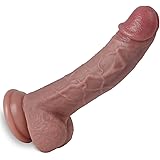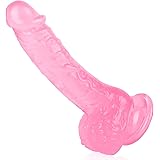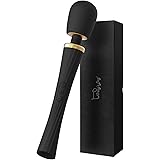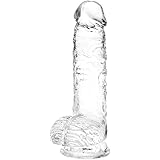Understanding Male Attraction: What Men Are Drawn To and the Phenomenon of Dick Pics

The Science of Male Attraction
Male attraction is a complex interplay of biological, psychological, and social factors that guide men’s preferences in romantic and sexual partners. Evolutionary psychology suggests that certain traits are universally appealing due to their implications for reproductive success. For instance, characteristics such as youthfulness and physical health signal fertility, which can subconsciously attract men looking for potential mates. These inclinations are rooted in survival instincts that have been shaped over thousands of years.
Hormones also play a vital role in male attraction. Testosterone, the primary male sex hormone, influences libido and may enhance the sensitivity to visual stimuli that signal physical attractiveness. Men often experience fluctuations in testosterone levels, which can affect their desire and attraction to women during different times of the day or month. Furthermore, pheromones—chemical signals that evoke social responses—are believed to impact attraction at a subconscious level, influencing how men perceive potential partners.
Human attraction does not solely stem from evolutionary and hormonal factors. Psychological elements, such as personal experiences, emotional states, and even attachment styles, significantly shape individual preferences. Men may be drawn to women who exhibit traits associated with warmth, kindness, or confidence—qualities that foster emotional connections and create a sense of safety. These elements highlight the importance of both biological imperatives and psychological nuances in the realm of attraction.
Cultural and social factors also significantly influence male preferences. Media representations, societal norms, and peer opinions can modulate what is perceived as attractive. As cultural standards evolve, the attributes that men find appealing may shift. Hence, while some aspects of male attraction may be biologically hardwired, the landscape is undoubtedly shaped by cultural contexts. Understanding these elements allows for a more comprehensive view of male attraction, demonstrating its multifaceted nature.
Physical Traits Men Are Attracted To
Understanding the physical traits that men are attracted to can provide valuable insights into male attraction. Various studies and surveys have sought to identify these traits, revealing a range of preferences that can vary significantly among individuals. Researchers have noted that body shape is a prominent factor. Many men tend to be attracted to a waist-to-hip ratio of approximately 0.7, which is often associated with fertility and health. This preference transcends cultures, suggesting a universal standard of beauty. However, it is important to recognize that personal experiences and cultural backgrounds can significantly shape individual attractions.
Facial features also play a crucial role in male attraction. Symmetry is frequently cited as an attractive characteristic; symmetrical faces are often perceived as more appealing. Traits such as full lips, clear skin, and bright eyes are also highly regarded. Moreover, women with higher estrogen levels, which are indicated by fuller facial features, may be favored by men due to evolutionary associations with youth and fertility. Despite these common preferences, cultural influences can lead to variation in what is deemed attractive. For example, certain cultures may favor specific hairstyles, skin tones, or other features based on regional beauty standards.
Another noteworthy aspect of male attraction includes physical attributes outside of body shape and facial features. Men often express an attraction to women’s hairstyles, posture, and even the way they carry themselves. Confidence can enhance perceived physical attractiveness, suggesting that personality traits often complement physical characteristics in the realm of attraction. Ultimately, while certain traits may be commonly found appealing across different demographics, the uniqueness of individual experiences and cultural ideals cannot be understated in this complex interplay of attraction.
Emotional and Intellectual Attraction
When it comes to understanding male attraction, it is crucial to delve into the non-physical aspects that often play a significant role in shaping a man’s interest in a potential partner. While physical appearance can initially catch attention, traits such as personality, humor, intelligence, and emotional intelligence frequently form deeper connections. These attributes can not only enhance physical attraction but also create a more meaningful bond between partners.
Personality traits are foundational in attracting men. A warm, engaging personality can make a person more approachable and relatable. Men are often drawn to those who exhibit confidence and authenticity. This comfort in one’s own skin can be highly appealing, serving as a magnet for attraction. Additionally, individuals who can maintain a positive attitude and demonstrate resilience in challenging situations tend to attract others, as these qualities suggest strength and compatibility in managing life’s ups and downs.
Humor is another critical factor that impacts male attraction. The ability to share a laugh creates an immediate connection and often enhances mutual attraction. Men are generally drawn to partners with whom they can share light-hearted moments and engage in playful banter. Humor fosters a sense of camaraderie and can lead to emotional intimacy, making the relationship more enjoyable and fulfilling.
Intelligence and emotional intelligence also play a significant role in male attraction. Men may seek partners who stimulate their minds and align with their interests. A woman who can engage in intellectual discourse, share ideas, and challenge perspectives often becomes more attractive. Emotional intelligence, or the ability to understand and manage one’s emotions, greatly contributes to creating a supportive and understanding atmosphere in a relationship. This quality allows for effective communication and conflict resolution, which are vital for any healthy partnership.
In conclusion, the elements of emotional and intellectual attraction significantly influence male preferences. Personality traits, humor, and emotional intelligence collectively enhance physical attraction and can lead to deeper, more enduring relationships.
The Role of Confidence and Attitude
Confidence and attitude play pivotal roles in shaping a woman’s attractiveness to men, often serving as critical factors that can significantly enhance desirability. Research indicates that self-esteem directly correlates with perceived attractiveness; women who exude confidence tend to captivate male interest. This phenomenon is not merely anecdotal; studies suggest that confident individuals possess more appealing body language, which fosters a positive interaction dynamic.
Body language, a non-verbal communication form, offers cues that can influence attraction levels. Confident women often display open postures, maintain eye contact, and engage with others authentically, traits that signal approachability and self-assuredness. Conversely, hesitant or insecure body language, characterized by closed-off stances or a lack of eye contact, may inadvertently deter potential partners. Thus, when navigating dating scenarios, these non-verbal signals can be as influential as verbal interactions.
Additionally, assertiveness contributes to a woman’s charm. Research has found that assertive women, who can articulate their desires and boundaries clearly, often attract more attention from men. This assertiveness does not imply aggression; rather, it reflects confidence in oneself and respect for one’s needs. Such traits can engender admiration and respect in the dating arena, making women appear more alluring and trustworthy.
Moreover, a positive attitude can enhance one’s attractiveness further. Women who maintain an optimistic outlook often create a more pleasant environment, making interactions enjoyable and engaging. This positivity can attract men who seek companionship and warmth, thereby reinforcing the significance of an upbeat demeanor. In summary, a woman’s confidence and attitude manifest in various ways, creating a compelling allure that greatly influences male attraction.
Cultural Influences on Male Attraction
Cultural factors play a pivotal role in shaping male attraction, influencing what men find appealing in potential partners. One significant component of this is societal standards of beauty, which vary widely across different cultures and historical periods. For instance, in some societies, traits such as slimness and youthfulness are often idealized, while in others, fuller figures or age may be celebrated as symbols of fertility, wealth, or experience. These culturally-driven ideals impact not only individual preferences but also the collective perception of attractiveness.
Media representation also profoundly shapes male attraction. Television, film, and advertising frequently depict specific body types and persona, perpetuating narrow definitions of attractiveness. These portrayals can lead to unrealistic expectations and desires among men, who may internalize these images as benchmarks. For example, the prevalence of muscular physiques and flawless skin can pressure men to aspire to these ideals, influencing their attraction not just in romantic partners but in peer relationships as well.
The integration of cultural heritage further complicates the narrative surrounding attraction. Different cultures emphasize various traits based on historical and social contexts. For example, in some cultures, familial ties and loyalty may be highly prized, leading men to value attributes associated with these traits over purely physical ideals. Additionally, the attraction can be interwoven with traditions, such as arranged marriages in certain societies, which shift the focus from individual choice to cultural compatibility.
In summary, various cultural influences intricately shape male attraction across numerous dimensions—from societal beauty standards and media representations to the impacts of cultural heritage. Understanding these factors can provide deeper insights into the complex nature of what men find attractive in a partner.
Understanding the Sending of Dick Pics
The phenomenon of unsolicited nude images, commonly referred to as “dick pics,” is a complex issue that reflects various psychological motivations and cultural influences. Many men who engage in this behavior do so in search of validation. In today’s digital age, the need for approval and acknowledgment has intensified, leading some individuals to believe that sending explicit images may garner positive attention or admiration from the recipient. This quest for affirmation can sometimes overshadow considerations of appropriateness and consent.
In addition, sexual expression plays a significant role in the decision to send unsolicited images. For some men, sharing intimate photos serves as a form of sexual communication, a way to convey desire or interest. However, this mode of expression often lacks the context and mutual understanding found in face-to-face interactions, which can result in misunderstanding and discomfort for the recipient. Consequently, this self-driven impulse does not account for the impact of unsolicited imagery on others.
Impulse control is another critical factor that contributes to this behavior. In the heat of the moment or under the influence of substances, some individuals may act on their urges without fully considering the potential repercussions. The anonymity often afforded by digital platforms may further embolden individuals to engage in such impulsive actions, leading to a disconnection from the social boundaries that typically govern interpersonal interactions.
Moreover, societal norms and digital culture have evolved in ways that can normalize or trivialize this behavior, making it more prevalent in certain circles. While some may view sending explicit images as a casual or humorous act, it is essential to recognize the discomfort it can cause. Addressing the motivations behind this behavior requires ongoing dialogue and education about consent, respect, and interpersonal boundaries in an increasingly interconnected world.
The Reactions to Dick Pics and Their Implications
The act of sending unsolicited explicit photographs, commonly referred to as “dick pics,” elicits a wide array of reactions from women. These responses can range from shock, discomfort, and anger to humor and even amusement. The initial reception often hinges on the context in which the image is received, the existing rapport between the individuals, and the timing of the encounter. For many women, the receipt of such images can serve as a disconcerting reminder of their vulnerability, leading to feelings of objectification and disrespect.
Shock is perhaps the most immediate reaction; many women are unprepared for the suddenness and the boldness of the act. This can create a significant emotional response, as the image may not align with the nature of their interaction thus far. Alternatively, some women adopt a more humorous stance, viewing the situation as absurd and even using it as fodder for conversation with friends. This can serve to alleviate the discomfort surrounding the unsolicited nature of the image.
However, the implications of such actions extend beyond individual encounters. The practice of sending dick pics can shape women’s perceptions of men, potentially fostering distrust and reinforcing negative stereotypes. Women may begin to categorize men based on their experiences with unsolicited images, associating them with a lack of respect or emotional intelligence. This trend undoubtedly influences the dynamics of dating and relationships, causing a rift between genuine intentions and perceived advances.
Moreover, the prevalence of this phenomenon may alter women’s overall dating strategies, leading them to communicate boundaries more rigorously. Overall, the reactions to dick pics demonstrate complex emotional and social implications, shedding light on the challenges women face in navigating male-female interactions in the digital age.
Boundaries and Consent in Digital Communication
In today’s digital age, where communication is often conducted through texts and images, understanding boundaries and consent has never been more critical. The ability to send intimate images, such as “dick pics,” illustrates the need for men to be aware of and respect personal boundaries in all forms of digital interactions. Establishing clear communication about what is acceptable is essential, as assumptions can lead to misunderstandings and potential harm. Communication should always include an open dialogue regarding consent, as this sets the standard for respectful engagement.
The phenomenon of unsolicited intimate images highlights the repercussions of ignoring boundaries. Many individuals find such communications intrusive and degrading, leading to feelings of distress and violation. Men must recognize that consent is not merely about the absence of a “no;” it requires an affirmative and enthusiastic “yes.” This approach encourages healthier relationships and fosters a mutual understanding rooted in respect. Moreover, it is essential to acknowledge that different people have diverse comfort levels regarding intimate communications, and these preferences must be taken into consideration.
Setting boundaries also involves being aware of the context in which interactions occur. What might be acceptable in a close relationship may not be appropriate in a casual context or with someone who has not explicitly expressed interest in such exchanges. Moreover, maintaining awareness of the potential for digital images to be shared beyond the intended recipient is crucial in promoting a culture of respect and consent.
Ultimately, fostering a culture where boundaries and consent are prioritized contributes to healthier communication, reducing the likelihood of misunderstandings and discomfort. Men can cultivate stronger relationships by understanding and respecting the importance of these concepts, creating an environment where intimacy is shared willingly and safely.
Conclusion: Balancing Attraction and Respect
Understanding male attraction involves recognizing a complex interplay of biological impulses, psychological factors, and cultural influences. Throughout this discussion, we have explored various elements that contribute to what men find appealing, including physical attributes, personality traits, and behavior. Additionally, we have delved into the contemporary phenomenon of sending unsolicited explicit images, commonly referred to as “dick pics.” This behavior raises important questions regarding boundaries, consent, and respect in relationships.
It is crucial to appreciate that attraction does not exist in a vacuum; it is influenced by context, mutual interests, and the dynamics of interpersonal communication. While men may be instinctively drawn to specific characteristics or signals of attractiveness, these instincts must be tempered by an understanding of respect and the individual desires of others. The act of expressing attraction must be approached thoughtfully, ensuring that the feelings and comfort levels of all parties involved are taken into consideration.
Encouraging open dialogue about attraction can foster healthier interactions between men and women. Men should be mindful of how their advances are received, and women should feel empowered to communicate their boundaries clearly. Striking a balance between expressing genuine interest and maintaining respect for personal boundaries is essential. Ultimately, attraction should cultivate connections rather than discomfort, leading to fulfilling romantic or sexual relationships.
As we navigate the complexities of attraction, it is imperative to emphasize the value of empathy, respect, and mutual understanding. By harmonizing our desires with the feelings of others, we can create a more respectful and fulfilling environment for all individuals involved in the pursuit of attraction.

























